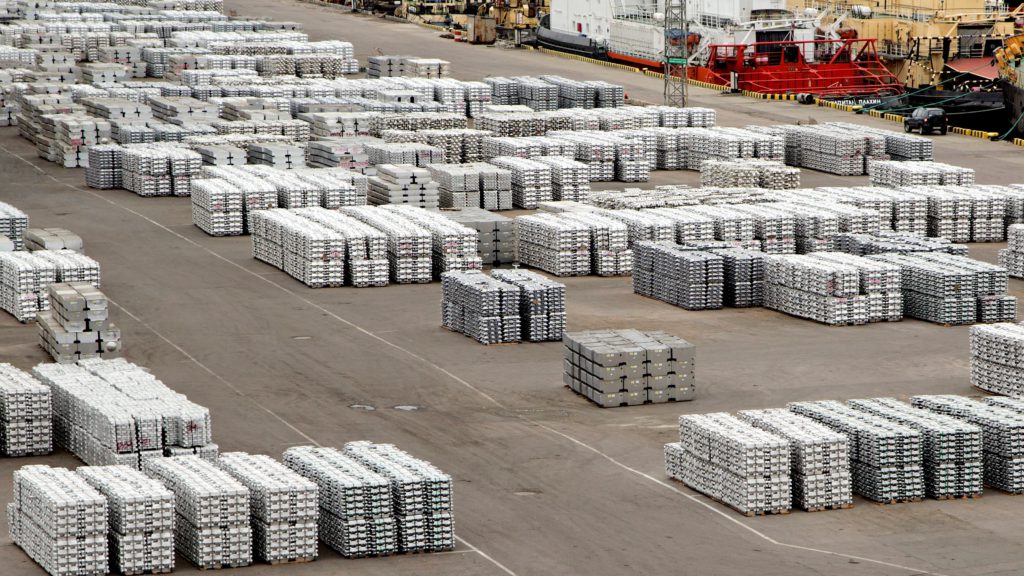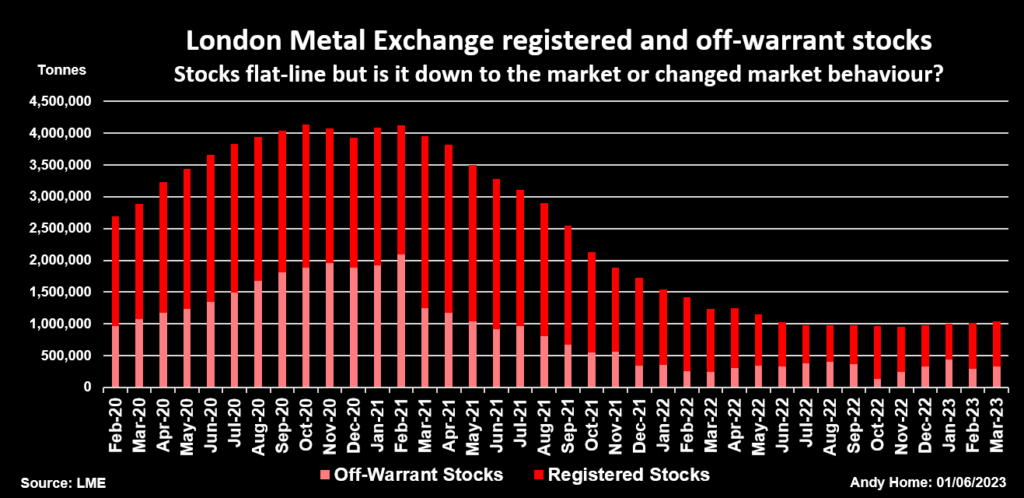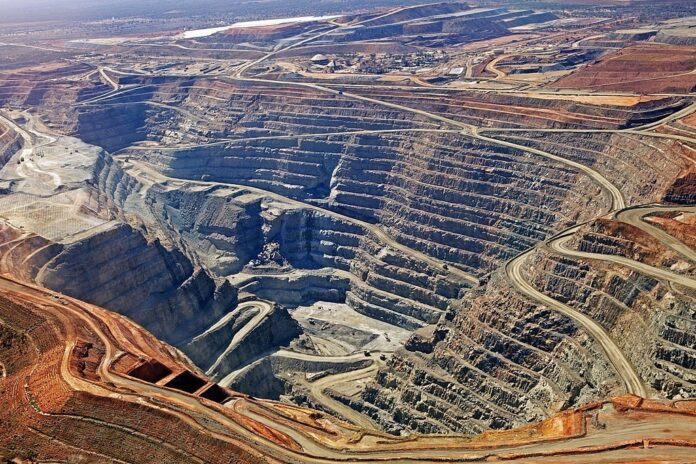Column: London Metal Exchange renews stocks transparency drive

The London Metal Exchange (LME) is once again looking to shine more light on what lies in the shadows of its warehousing system.
The exchange’s daily stocks reports offer a rare hard data point in a murky statistical landscape for metal traders.
But their usefulness as a market signal has been steadily undermined by the emergence of a shadow LME storage function, which can mean large amounts of previously uncounted metal suddenly “arriving” in a single day.
The LME extended its stocks reporting requirements in 2020 to try to capture part of this shadow inventory. But the monthly reports have added only a little light and the LME concedes that calls for more transparency have only intensified in the interim.
Minds have been focused by last year’s nickel meltdown and the 146-year old exchange, owned by Hong Kong Exchanges and Clearing, is on a drive to rebuild confidence with both investors and industrial users.
Restoring trust in its stock reporting is an important part of the plan and the LME is now consulting on requiring warehouse operators report all eligible metal in their sheds, a move that would bring the exchange into line with its peers.

Shadow games
LME stocks have always been gamed but it’s become easier to surprise the market with super-size “arrivals” such as the 94,950 tonnes of aluminum warranted on Feb. 10 at Malaysia’s Port Klang.
It is physically impossible for such a large amount of metal to be loaded into a warehouse in a single day. Rather, the aluminum was already sitting there, ready at the stroke of a computer key to be electronically warranted.
The LME consulted on the issue in 2019 but backed down from forcing warehouses to report all eligible stocks due to a fear of regulatory “over-reach”.
It went instead for a half-way-house solution of requiring warehousers report off-warrant tonnage if it’s covered by a contract explicitly referencing LME storage and/or warranting.
The exchange also, somewhat optimistically, hoped for voluntary reporting of shadow inventory.
A fading light?
The LME’s monthly “off-warrant” stocks reports initially captured a huge amount of previously unseen tonnage. Shadow stocks of 2,093,000 tonnes in February 2021 even exceeded total registered tonnage of 2,027,000 tonnes.
However, the reports are released with a one-month time-lag, meaning even if a large build-up of potentially warrantable metal shows up, there’s a good change it has already been warranted.
Moreover, the amount of off-warrant stock has noticeably shrunk. LME shadow inventory totalled 334,251 tonnes at the end of March compared with registered stocks of 707,227 tonnes.
Aluminum accounted for 93% of the off-market total, the highest ratio since the report was first published in February 2020. Off-warrant inventory of nickel, lead and tin was minimal and shadow copper stocks just 7,261 tonnes at the end of March.
The decline in off-warrant stocks from their 2021 peak could be down to market dynamics, given that metals such as zinc, lead and tin have seen bouts of extreme physical tightness over the last two years.
But it’s also possible that the decline is down to a shift in market behaviour as owners retreat further into the warehousing shadows to avoid scrutiny.
Warrantable metal can easily be accumulated without any contractual reference to the LME but still be close enough to an exchange warehouse to hit the market at short notice.
Eligible metal
The LME is now returning to the option of reporting all eligible stocks, meaning anything in an LME shed that meets the exchange delivery criteria.
Both CME and the Shanghai Futures Exchange already do so with the total deliverable stock figure rather than the warranted component the primary market indicator.
The LME has historically done things differently and all previous attempts to follow its peers have run into concerted opposition from those who argue their inventory is confidential if they have no intention to warrant it on the exchange.
The counter-argument, as the LME noted in its 2019 discussion paper, is that such opposition is “driven not by a need for confidentiality, but rather by a preference to use this information for market gain.”
The nickel crisis and accompanying regulatory scrutiny of the LME have shifted the dial of the debate.
“While the LME understands the drive for confidentiality, it does also recognise that a significant majority of the market prefers increased transparency and believes the value this can add in respect of market stability can be considerable,” the exchange said in its latest consultation document.
It “is not unreasonable” that metal owners should contribute to greater market transparency in exchange for having the option of short-notice LME warranting, it added.
Restoring trust
The LME’s consultation closes on July 14 and the exchange said it is “keen to hear further market views on this topic before making a final decision.”
But there’s little doubt which way the decision is likely to go.
“Trusted stock data related to metal stored globally in LME licensed warehouses is viewed by the LME as vital to supporting confidence in the operation of the LME’s markets,” according to the exchange.
The LME’s stock data haven’t been trusted by the market for many years with aluminum, copper and zinc all experiencing large-volume single-day arrivals at various times in the past decade.
Given the current backdrop of low LME inventories, the impact of even modest tonnages hitting the system can be price disruptive.
LME warehouses in Singapore saw 29,450 tonnes warranted in the space of two days last week. That’s small relative to the 105,800 tonnes of zinc that showed up in two days in January 2021 but a large increase from the 45,500-tonne total the day before the “arrivals”.
Traders will game any system they come up against but the current LME stocks reporting regime makes it too easy. Each stocks surprise chips away at the LME’s credibility as a fair pricing mechanism.
Restoring trust in exchange stocks reporting is a key step in winning back the broader confidence of the market.
However, those hoping for an immediate replication of the CME and Shanghai stock reports will be disappointed.
The new eligible stocks reports will initially still only be published monthly, although the LME said it believes it could get closer to real-time reporting “in the longer term” via a new reporting platform.
(The opinions expressed here are those of the author, Andy Home, a columnist for Reuters.)
(Editing by Mark Potter)
More News
Barrick eyes 30% production growth by 2030
The company is also considering changing its name from Barrick Gold to Barrick Mining to reflect its changing production profile, chairman John Thornton said.
April 04, 2025 | 03:26 pm
Trump, tariffs and tin
Only one metal has escaped the tariff tsunami.
April 04, 2025 | 01:44 pm
{{ commodity.name }}
{{ post.title }}
{{ post.excerpt }}
{{ post.date }}



Comments